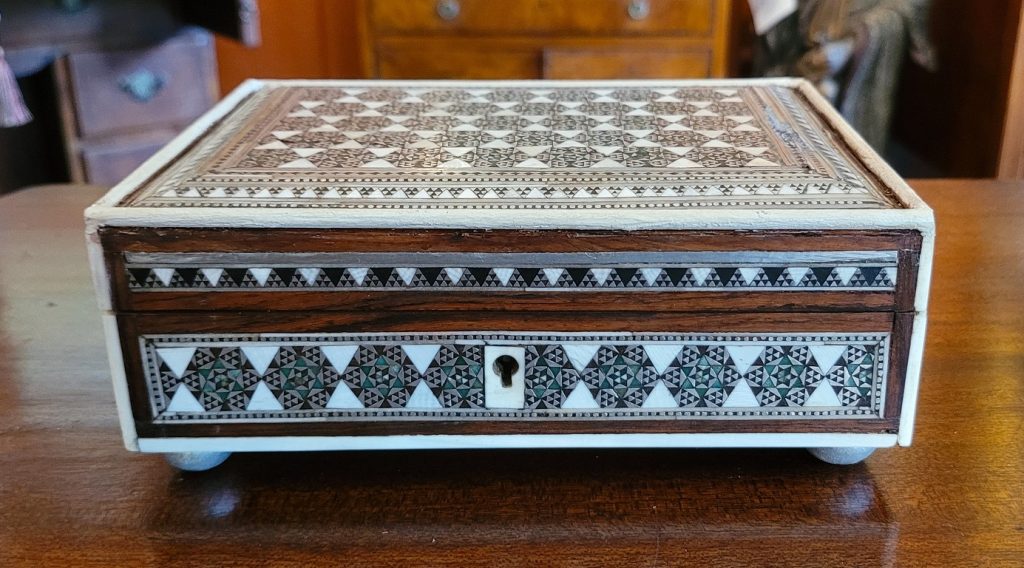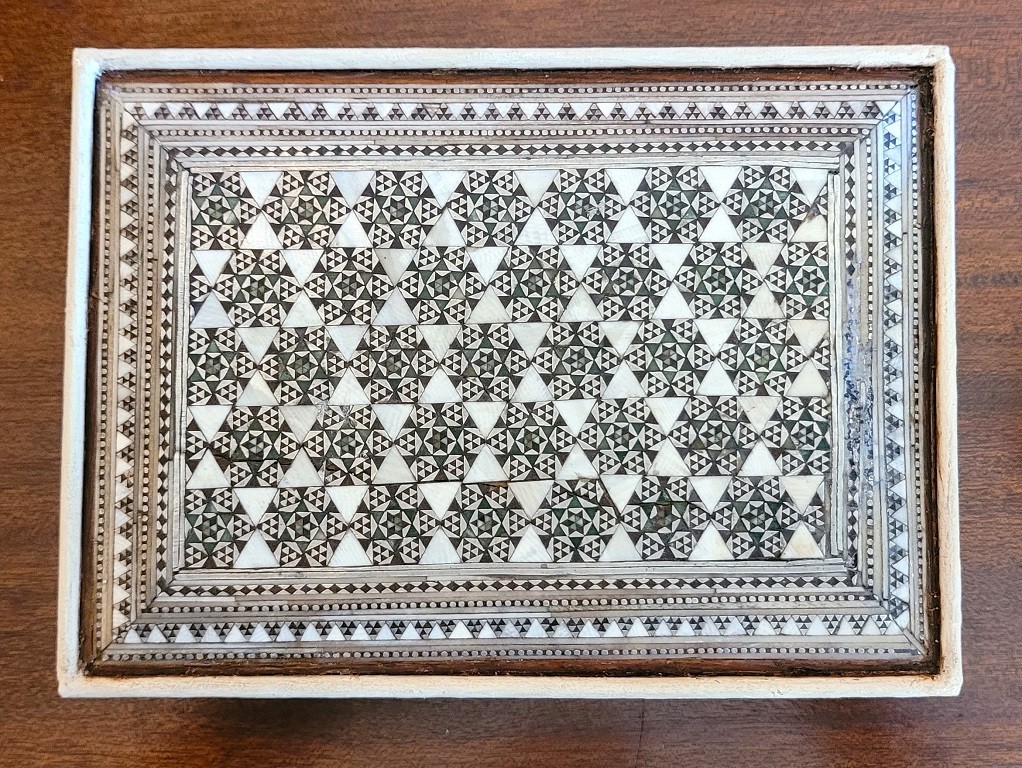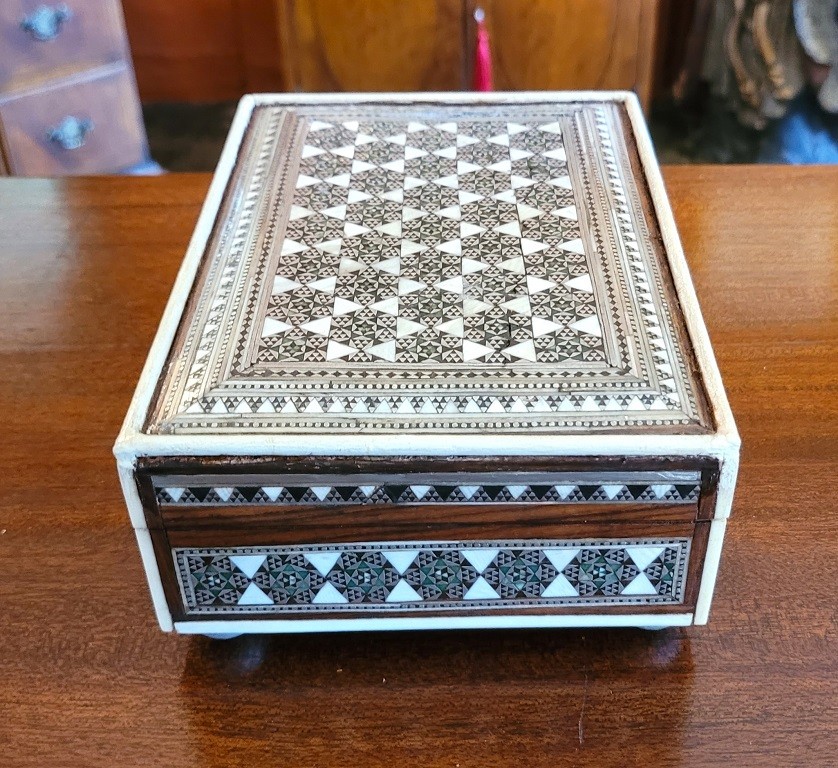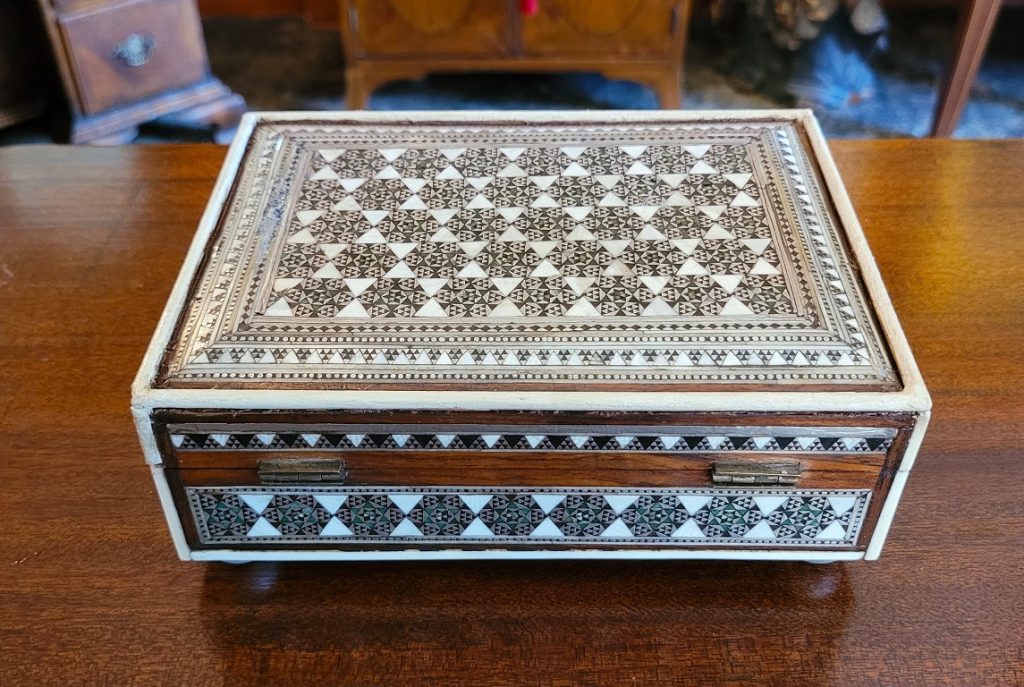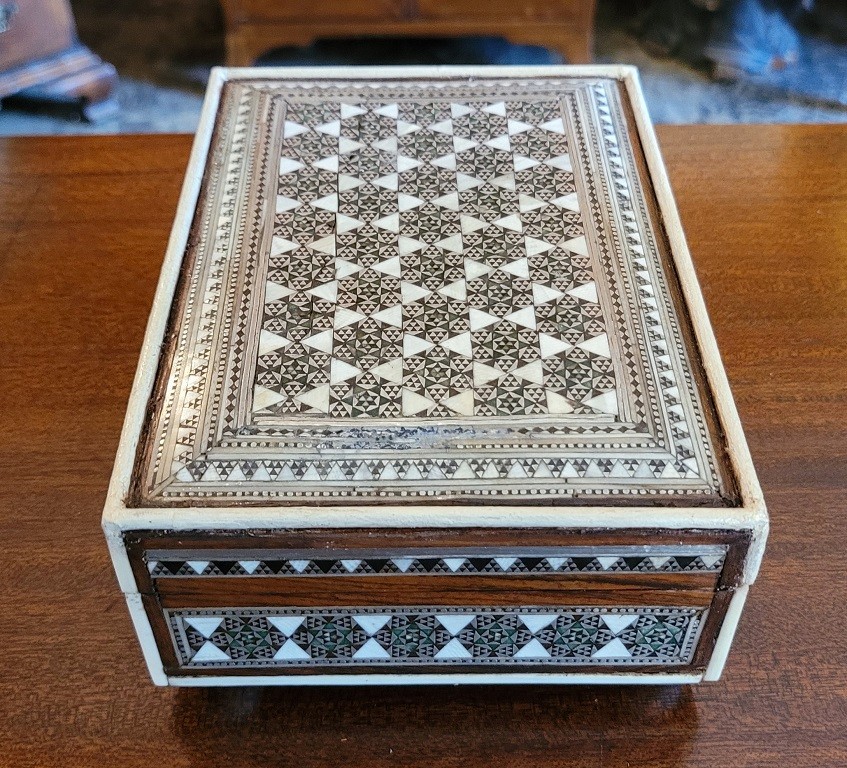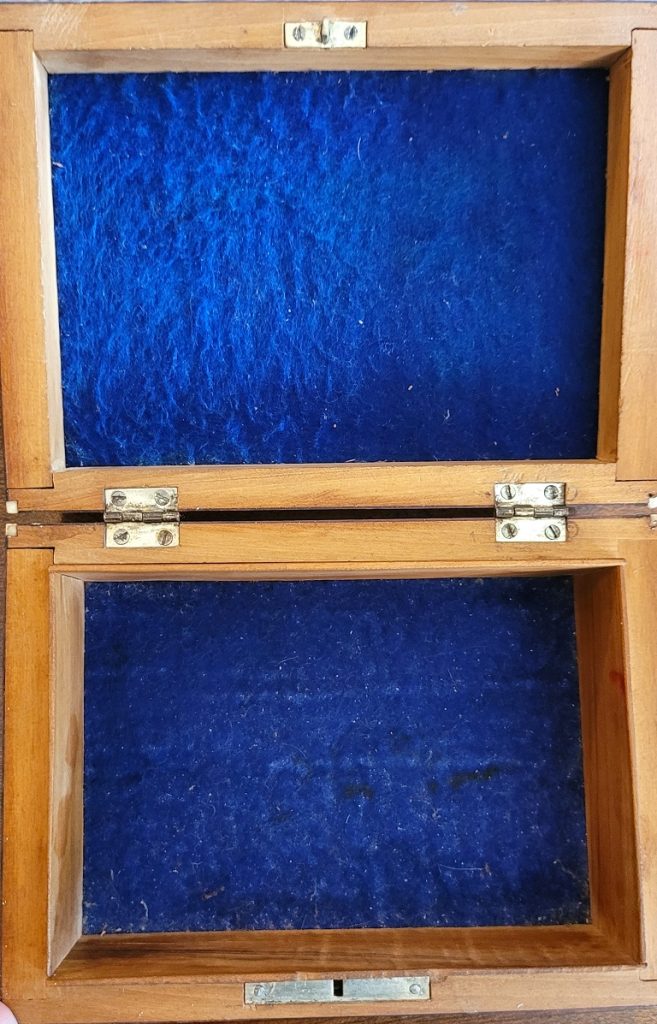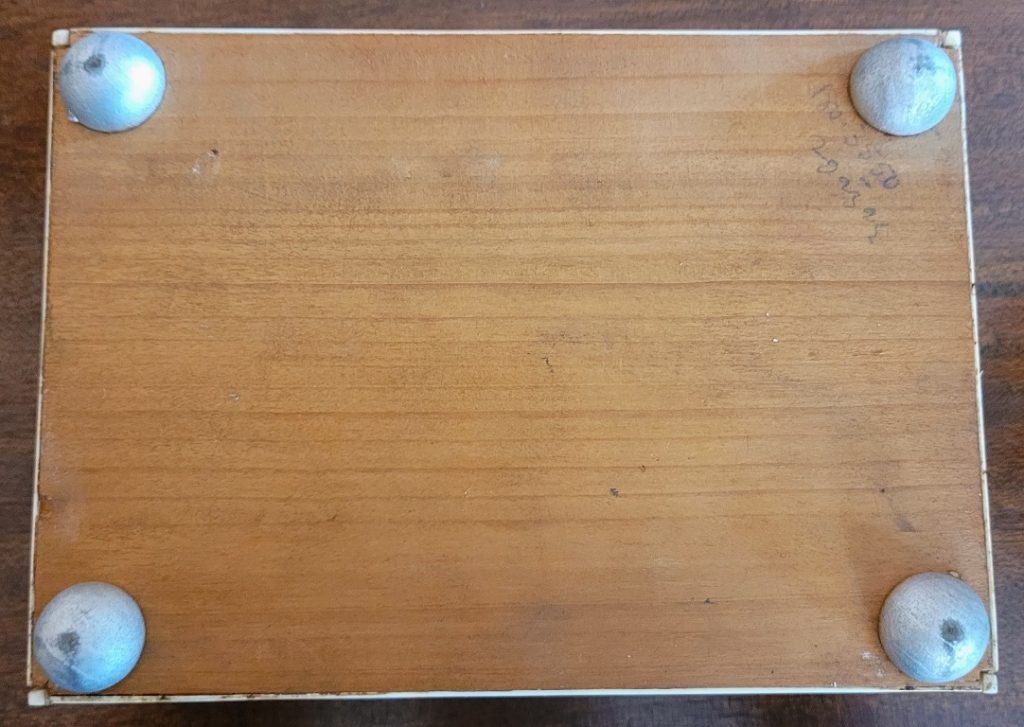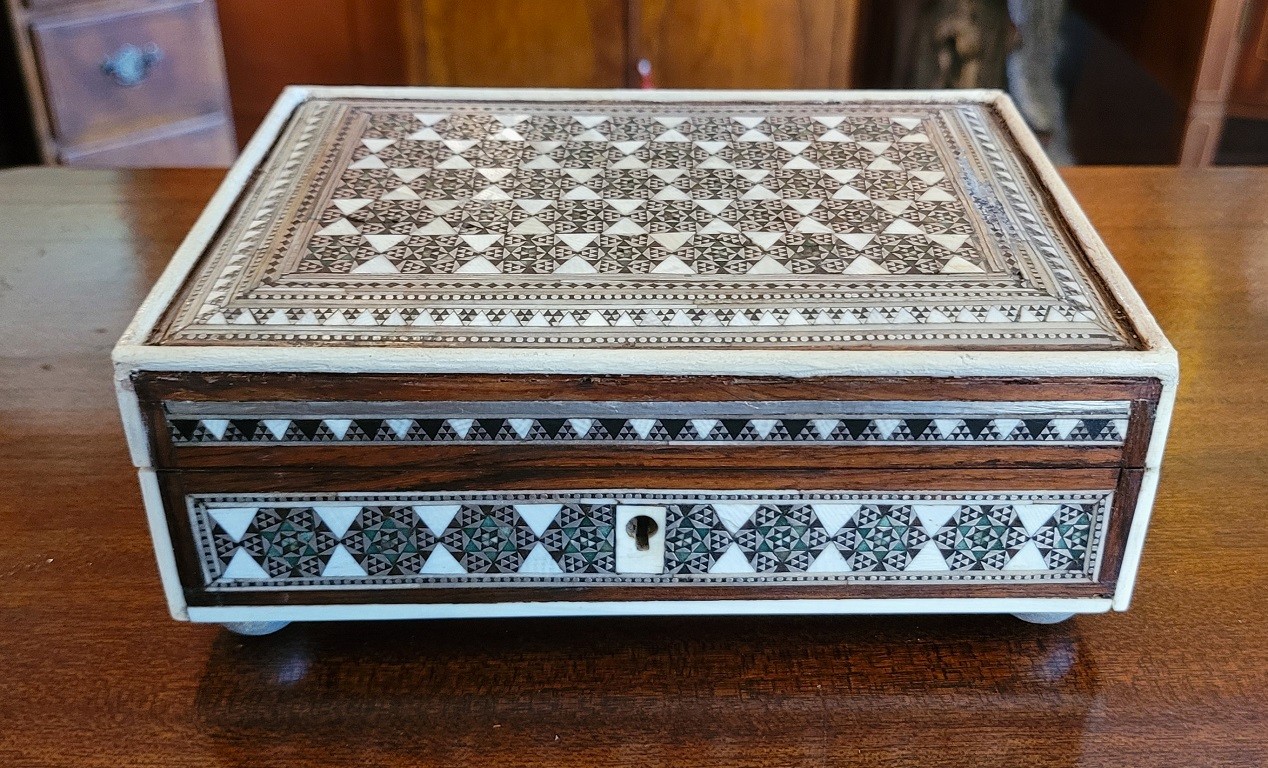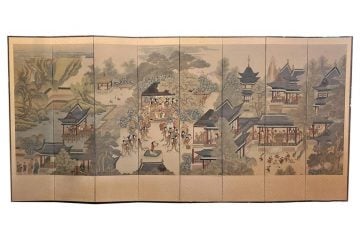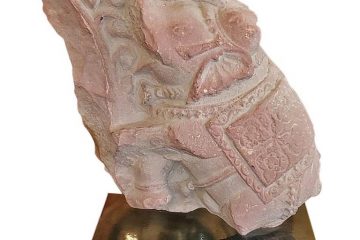19C Anglo Indian Bombay MOP Sadeli Mosaic Trinket Box
PRESENTING a LOVELY 19C Anglo Indian Bombay MOP (Mother of Pearl) Sadeli Mosaic Trinket Box from circa 1875-85.
Gorgeously detailed and hand-crafted ‘sadeli mosaic’ inlay, from the Bombay Area, with deep greens with silver, pewter, mother of pearl, bone and ebony in geometric patterns.
The box case, is made of sandalwood but completely covered in MOP, bone, faux ivory, ebony and mosaic inlay.
Edged with faux ivory and banded with a different pattern of sadeli mosaic.
Some minor damage to the top (repair is obvious in pics) and ivorine replacements to some edging, but it still a BEAUTIFUL BOX and of real QUALITY!
The mosaic work is FABULOUS!
Box opens to reveal its original blue velvet lining.
It sits on 4 (recently added) silvered button feet.
SADELI MOSAIC: “Anglo Indian boxes were made in India for the English residents from the early part of the 18th century. They were brought back or sent back to England usually by the people who had commissioned them. From the beginning of the nineteenth century they were imported more commercially, although not in any significant numbers until the middle decades. They were very highly valued, especially the early ones, to the extent that the designs were copied on late 19th and early 20th century tins.
The ancient art of Sadeli Mosaic is said to have been introduced from Shiraz in Persia via Sind to Bombay, a long time before the Anglo Indian boxes were made. It was a technique, which required a high degree of skill and patience. It was executed very lavishly, in that the frequent cuts wasted a great amount of the precious materials used. The workmanship was however more than commensurable to the value of the materials.
Ivory, silver, pewter (or other metals), wood and horn were cut into faceted rods which were bound together to form geometric patterns. When the glue has set, the rods were sliced in transverse sections. This gave the maker a number of angled circular pieces in the original pattern. Several variations of patterns could be achieved by combining the materials in different ways. The ivory was sometimes dyed green to give an extra color.
The mosaic pieces in a combination of patterns, often separated by ivory, ebony, horn or silver stringing were used to veneer sandalwood boxes. In the early boxes, which date from the turn of the 18th to the 19th century, there are large panels of mosaic covering tops and sides of boxes. It took incredible skill to cover such large areas without any shakes or wavering of the pattern. The corners and joins on these boxes are impeccably matched.
The makers (reputed to be Persian) of Sadeli mosaic made in the first two decades of the 19th century displayed a total understanding of the qualities of the different materials they used. They combined substances, which can expand and contract according to atmospheric conditions with others, which are hard and unyielding. The result was a sharp definition of the lines and patterns, which made up the whole design.
On the early boxes the designs look deceptively simple. The fact is, they emerged from a culture, which had mastered geometry and understood how to generate a pattern from a set number of points. The patterns are so harmoniously combined that their incredible complexity is not immediately apparent.
The earliest Sadeli boxes are of simple rectangular shapes. The combination of the diverse patterns is a triumph of artistic judgment, impeccable workmanship and deep respect for the material in hand. The boxes have an opulence emanating from the richness of the materials, yet the total control of these materials and the cerebral nature of the overall designs give them a restrained dignity. These early Sadeli boxes are now very rare indeed.
The carved Anglo Indian boxes fall into two very distinctive categories:
1. Early 19th century sandalwood boxes which were finely carved with repetitive floral and bird motifs and
2. Later 19th and 20th century wooden boxes much more crudely carved with or without late period Sadeli mosaic.
There are of course variations in the quality of these later boxes and some of them are very striking.
Boxes from the first category are very rare. “
Link: http://hygra.com/anglo.html
19C Anglo Indian Bombay MOP Sadeli Mosaic Trinket Box
Provenance: Part of our extensive Anglo-Indian Collection.
Dimensions: 7 inches wide, 3 inches tall (closed) and 6.75 inches tall (open) and 4.8 inches deep
Condition: Good to Fair condition. Some minor repairs and losses, but not hugely significant. The mosaic itself (the most important factor) is in very good condition. Box is structurally sound. No key.
SALE PRICE NOW: $760


